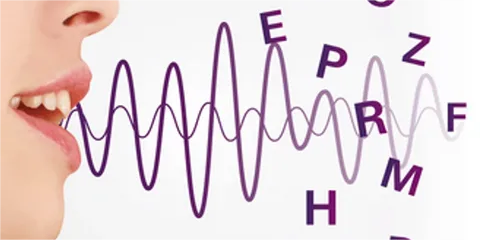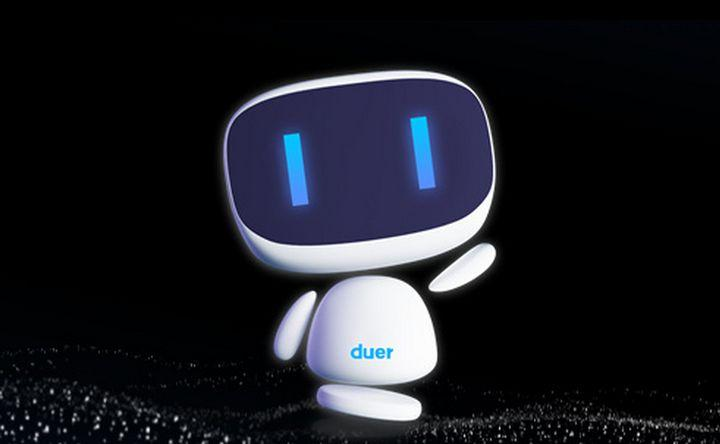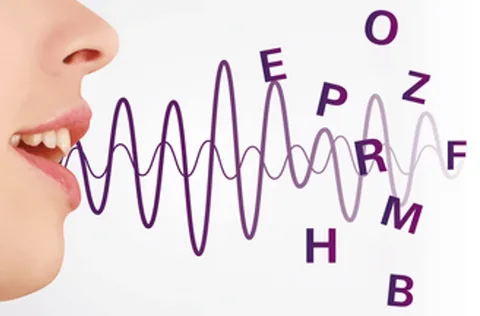
Imagine stepping into a future where your voice commands bring technology to life, transforming science fiction dreams into our daily reality. With a simple spoken command, your devices spring into action, eliminating the need for physical interaction.
This is not a glimpse into a distant future but the present state of speech recognition technology that's reshaping how we engage with our digital companions. From the moment you summon your smart assistant to kick start your day to the ease of sending messages without lifting a finger in a busy schedule, the technology behind voice recognition is revolutionizing our interactions with the world.
But what magic lies behind this technology? How does it work, and what challenges do we face in perfecting it? Dive into this article as we unravel the secrets of speech recognition, from its workings and applications to the hurdles we overcome to enhance its capabilities. Let's embark on a journey to uncover how speech recognition is crafting a revolutionary narrative in our everyday lives.
Speech recognition is an interdisciplinary subfield of computer science and computational linguistics that develops methodologies and technologies that enable the recognition and translation of spoken language into text by computers. It is also known as automatic speech recognition (ASR), computer speech recognition or speech to text . It incorporates knowledge and research in the computer science, linguistics and computer engineering fields.
From the technology perspective, speech recognition has a long history with several waves of major innovations. Most recently, the field has benefited from advances in deep learning and big data. The advances are evidenced not only by the surge of academic papers published in the field, but more importantly by the worldwide industry adoption of a variety of deep learning methods in designing and deploying speech recognition systems.
Every device includes a computer, phone, or microphone that detects and records audio signals and speech samples. It converts the digital information into frequencies before analyzing individual pieces of content. The speech-to-text technology then deconstructs the recording, removing background noise and adjusting the pitch, volume, and tempo of the speech.
It then converts the digital information into frequencies before analyzing individual pieces of content. Background noise, voices, slang terms, and cross-talk can all interfere with recognition. However, advances in artificial intelligence (AI) and machine learning technology have begun filtering these anomalies out to improve performance.
Here are some examples of recognition speech:
● Identify the words: Identify the words, models, and information in the user's speech or audio. This business reliability step necessitates teaching the model to recognize each word in the dictionary or audio cloud.
● Voice Recording: The first stage is completed using the gadget's built-in voice recorder. Following the recording, the user's voice is stored as an audio signal.
● Text converted to audio and language files: For other components of the AI software solutions system to process the recognized audio, this step entails translating them into letters or numbers (referred to as phonemes).
● Taking samples: Computers and other electronic devices use discrete data, as you are aware. A sound wave is known to be continuous, according to fundamental physics. Therefore, it is converted to discrete. Perform this constant to discrete conversion.
● Changed to frequency domain: This stage converts the time domain of the audio signal to the frequency domain. This stage is critical because the frequency domain can be used to investigate a large amount of audio data. This time domain is used to analyze mathematical equations, physiological signals, or time series of economic or environmental information. Similarly, the frequency domain analyzes mathematical equations or signals based on frequency rather than time.
Imagine if your voice were a magic wand that could translate spoken words into written instructions, captions that appear in real-time, and even written commands. The power of recognition apps lies in their ability to blur the boundaries between text excitingly and
Voice. These apps hold out the promise of a more productive and inclusive future where you will be able to influence the world around you through increasing accessibility and simplifying mundane tasks. Here are some samples of recognition applications:

Smart phones use voice commands for voice search, call routing, speech-to-text conversion, and voice dialing. Users do not need to look at their devices to reply to a text message: recognition technology powers Siri, the Apple iPhone’s virtual assistant, and the keyboard. Functionality is also present in a second language. Furthermore, word-processing applications like Microsoft Word have built-in, features that enable that enable a user to dictate text to be converted into text.
Artificial Intelligence is a technology that learns and is applied to various fields as transcript tools. Healthcare is among the most essential because it enables medical professionals to provide patients with better care. Through the use of models of learning in voice-activated
devices, patients can converse with physicians, nurses, and other healthcare providers without holding a phone or typing on a keyboard. While voice-to-text applications provide actual language support for individuals learning a new language or have reading difficulties, software programs for dictation help doctors record patient interactions effectively.
The translation programs like Google Translate, you can communicate with people anywhere in the world, regardless of their language. Automated speech transcriptions improve video conferencing by enabling cross-cultural and multilingual collaboration.
Research and development in artificial intelligence and robotics are powered by advances. Through the analysis of extensive spoken language databases, researchers are able to enhance text-to-speech manufacturing and create conversational artificial intelligence. Assistants, and even gain knowledge of human feelings through speech patterns.
While speech recognition technology offers many benefits, it still faces a number of challenges that need to be addressed. Some of the main limitations of speech recognition include:
1. Accents and dialects: Accents and dialects differ in pronunciation, vocabulary, and grammar, making it difficult for speech recognition applications to recognize speech accurately.
Assume a speech recognition model has been primarily trained on American English accents. If a speaker with a strong Scottish accent uses the system, they may encounter difficulties due to pronunciation differences. For example, the word “water” is pronounced differently in both accents. If the system is not familiar with this pronunciation, it may struggle to recognize the word “water.”
l Solution: Addressing these challenges is crucial to enhancing speech recognition applications’ accuracy. To overcome pronunciation variations, it is essential to expand the training data to include samples from speakers with diverse accents. Surfing Tech offers speech recognition datasets from various countries and dialects. Please visit https://www.surfing.ai/datasets/speechrecognition/ and select the speech data you need.This approach helps the system recognize and understand a broader range of speech patterns.
2. Background noise: Background noise (e.g., traffic, cross-talk) makes distinguishing speech from background noise difficult for speech recognition applications .
Solution: Pre-processing techniques can be used to reduce background noise in speech recognition, which can help improve the performance of speech recognition models in noisy environments.
1. Out-of-vocabulary words: Since the speech recognizers model has not been trained on OOV words, they may incorrectly recognize them as different or fail to transcribe them when encountering them.
2. Homophones: Homophones are words that are pronounced identically but have different meanings, such as “to,” “too,” and “two”.
1. Data privacy and security: Speech recognition systems involve processing and storing sensitive and personal information, such as financial information. An unauthorized party could use the captured information, leading to privacy breaches.
2. Limited training data: Limited training data directly impacts the performance of speech recognition software. With insufficient training data, the speech recognition model may struggle to generalize different accents or recognize less common words.
The ability of AI to recognize and react to spoken language is known as recognition speech. A few important settings, including codecs, channels, sampling rate, and audio quality, can help your software perform better in real-time and asynchronous scenarios. 《The Top 10 Leading AI Training Data Providers》This article introduces well-known speech recognition suppliers, whose customized datasets can significantly improve speech recognition results.

Their innovative efforts in sourcing and curating rich and varied datasets are pushing the frontiers of AI technology and stimulating innovation. You can see that these trailblazers' contributions are not only influencing the current state of artificial intelligence (AI) but also charting its course for the future as you learn more about their backgrounds and areas of expertise. Here are some methods of improving recognition and speech accuracy:
Customized terms unique to your industry can be accurately recognized with recognition engines designed for that purpose. Choose the item without hesitation if it is suitable for your industry. The categories of industries include "law," "insurance," "finance," "medical," "Japanese history," "world history," "chemistry," "diet," "COVID-19," "pharmaceuticals," "architecture," "IT terminology," "HR and labor," "accounting audit," and others. Please use the industry category that most closely matches your organization or business.
A significant contributing factor to decreased detection of speech accuracy is the regular occurrence of rare special terms (technical terms and users' own proper nouns) in speech. The accuracy of recognition speech can be increased by automatically entering those unique terms into the dictionary.
Speech recognition is rapidly growing. Users can interact with computers in a number of ways without typing a lot. This technology facilitates fast and easy spoken communication, which is useful for a variety of communications-based commercial applications. AI software for speech recognition has advanced significantly in the past years of study.
Text-to-speech is translated using artificial intelligence (AI). By processing audio data and translating it into words that can be used in businesses, the technology makes use of machine learning and neural networks.
AI recognition can be applied to a number of tasks, such as transcription and dictation. Voice assistants such as Alexa and Siri also use this technology.
Utilizing speech synthesis and recognition technology, speech communication refers to speaking with a machine. Users can save time by using recognition speech to dictate text into a program instead of typing it out. AI voice assistants such as Siri and Alexa use speech synthesis.
Does speech recognition technology make security and privacy less safe?
Concerns about privacy and security are considered in voice recognition technology by using encryption, user consent, and data protection methods to keep user data private and safe.